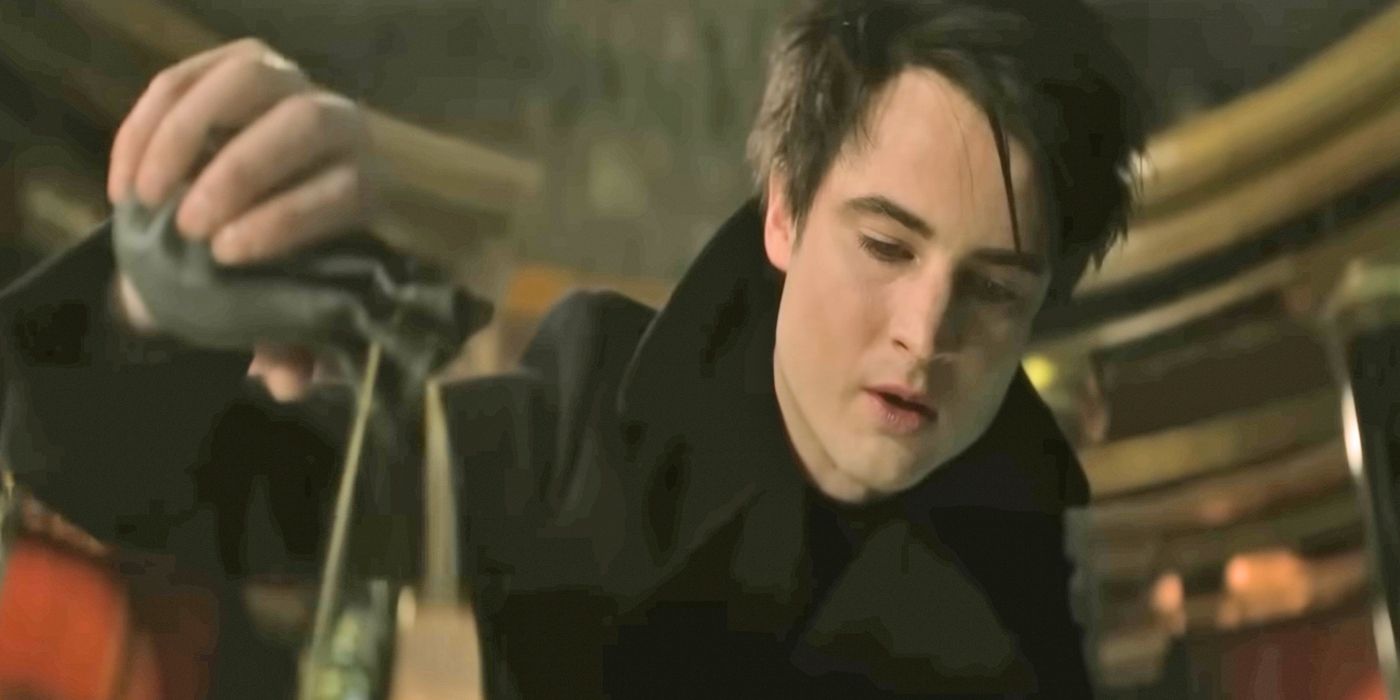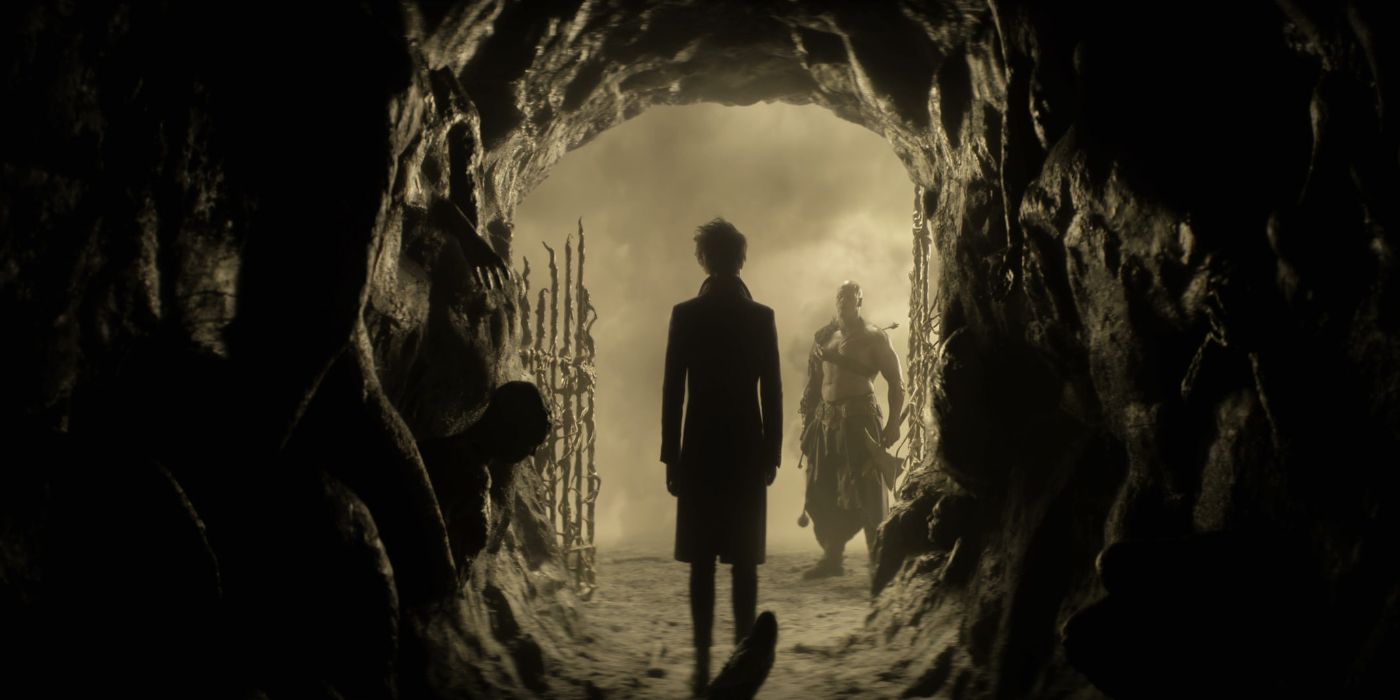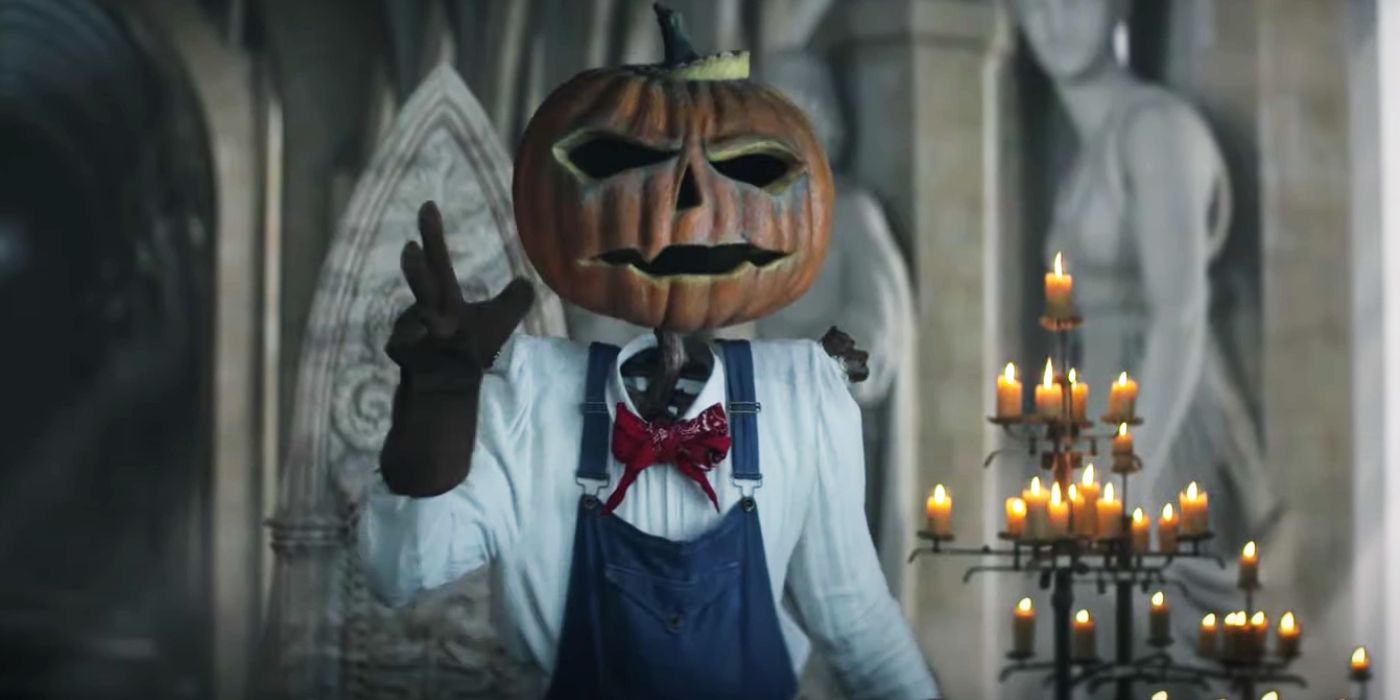The following contains spoilers for The Sandman, available on Netflix.
The small screen adaptation of Neil Gaiman's beloved The Sandman comic book series finally dropped on Netflix. The show centers on Morpheus (Tom Sturridge), aka Dream or the Sandman. One of the magical siblings known as the Endless, Morpheus rules over the realm of sleep and his kingdom, the Dreaming.
The TV series opens in 1916 when the sinister magus Roderick Burgess (Charles Dance) accidentally captures Morpheus and imprisons him. Over a century later, Morpheus manages to break free of his glass jail and sets out to retrieve his tools (a helm, ruby, and pouch of sand) in order to rebuild his fallen kingdom. The Lord of Dreams will face opposition in the form of Lucifer, the Fates, and the escaped nightmare turned serial killer, the Corinthian (Boyd Holbrook). Showrunner Allan Heinberg recently spoke with CBR about The Sandman's scope, adapting the epic tale, Morpheus' quest, and world-building.
CBR: Neil Gaiman's The Sandman was first introduced in the late '80s. How well has it aged? What makes the Endless so timeless?
Allan Heinberg: Everything about the Endless is timeless. None of that material [is] dated. Their struggles, their fighting, their principles... because in the comic books, the story of the Endless extends over hundreds, if not thousands of years. As it was presented originally, I feel it's sort of timeless. In our show, it extends into 2022 and 2023. So, we didn't really have to adjust any of that material for present day. There are some elements that have to do with the Waking world, which need some updating. As Neil [Gaiman] has said in the press, we decided not to set the show in 1988 or '89. So, when Dream gets out of his cage, it's essentially present day.
The Sandman has been in developmental hell for decades. What about this property has proven so difficult to get right?
The sheer scope of it, really. What I understand from Neil and David Goyer's adventures in trying to develop this as a feature in the years prior to our development is it's very difficult, if not impossible, to try to fit that which is Sandman into a two-hour, three-act structure. I had 10 hours or more at my disposal, and it was still a challenge to try to do justice to it in the time that we had. I can't even imagine trying to distill what makes Sandman Sandman into two hours. That was the principal problem.
Part of the difficulty is how do you take a hero who is fairly passive and does not tell people what he is thinking or how he is feeling... How do you make him the center of your story and give the audience enough access to him to fall in love with him and go on a journey with him?
A lot of people view Rose Walker [played by Vanesu Samunyai] as a point-of-view character in those adaptations, as someone who represents the audience and is unfamiliar with the Endless and Dream's realm. If that's your entry character, the view you get of the Sandman universe is going to be fairly skewed. It becomes Rose's story instead of Dream's story. Neil has said the big difference in our adaptation is that we are telling Dream's story from Dream's point of view.
Let's elaborate on that. What is your take on the source material? What tale did you want to explore over the course of one season?
Having reread the comic books, I knew the first half of the season would be Preludes and Nocturnes and getting Dream's tools back. I didn't see a way to extend that story past five episodes of television. I had a feeling we would do "Sound of Her Wings" in Episode 6. By the end of the season, Dream has gotten his tools back, restored the Dreaming, and he's beginning to change in really powerful ways. It was instinct for me. We sort of kept it loose as we were moving through the material to see if there were places where we wanted to spend more time. In the end, I think it was exactly the right bite for Season 1.
For audiences, who is Morpheus, and where do we meet him at the beginning of the series?
At the very beginning of the series, he is the King of Dreams and Nightmares. He is the anthropomorphic personification of our dream life when we sleep. He is a powerful king in his realm. He takes his responsibilities very seriously. He is very principled. He can come off as aloof a lot of the time. He doesn't have a lot of patience or interest in humanity, except as little engines for dream energy when they sleep. He's fairly isolated in his kingdom. He has loyal subjects. He has the Librarian of the Dreaming, Lucienne [played by Vivienne Acheampong], who sort of serves as his prime minister.
He's in full command of his faculties when -- not to give away too much, but when one of his nightmares, the Corinthian, goes missing. He escapes the Dreaming and is feeding off mortals in the Waking world. Morpheus goes after the Corinthian. In the course of going after the Corinthian, he becomes captured by an amateur magician named Roderick Burgess. A century in captivity is the beginning of an odyssey of self-reflection and change where Dream starts having to question choices he's made in the past regarding his love life, his family, and his relationship with humanity.
Morpheus eventually makes it back to the Dreaming. How has it changed in his absence?
As we learn at the end of Episode 1, Morpheus is the Dreaming. He is the incarnation of the Dreaming. In his absence, the Dreaming fell apart because he was not there to sustain it. He was not there for the citizens of the Dreaming, who, for the most part, left while he was away. So, his kingdom is in ruins, and he spends the next several episodes trying to find the strength and his tools of power to restore his kingdom. We gain the trust of the citizens, who felt abandoned by him when he was captured.
Morpheus is described as this all-powerful being. When he returns to the Dreaming, what is he up against? Who could possibly challenge him?
Well, he's weaker than he has ever been. Morpheus is almost utterly powerless when he returns to the Dreaming. He is unable to restore his kingdom. He's never been so vulnerable and humiliated having to rely on his wits rather than on his tools of office, on the power that he used to have.
There are many, many forces who could prove challenging for him. The first of whom he encounters are the Fates, also known as the Furies or the Kindly Ones, who are even more powerful than the Endless and control fate. Then, there's Lucifer [played by Gwendoline Christie], the Ruler of Hell. Then, there are the escaped dreams, nightmares, and assorted demons, all of who pose enormous challenges to Dream in his weakened state. The first half of the season is Dream having to realize who he is without his tools, without his power, and having to strip down and go back to basics and use his brains and his charm to get by.
Would you consider the Corinthian the Sandman's main nemesis this season?
I would say the Corinthian is a primary antagonist. I would also say Rose Walker serves as a primary antagonist... a sort of frenemy. Dream keeps her close, but she becomes a very powerful threat, if not the most powerful threat to his realm and to our realm. But yes, the Corinthian, the Fates, Lucifer, Rose Walker are our principal antagonists in Season 1.
The Sandman features a plethora of characters. There's plenty of mythology to establish. How much of that world-building are you doing in Season 1? How challenging was it to bring all of that into 10 episodes?
It seems incredibly challenging. We just took it one step at a time. The first six episodes are almost like six little movies. There isn't a real carryover. We don't have a lot of characters in common from one episode to the next. There are no sets in common. Each is a sort of freestanding adventure. With those first six episodes, we are truly introducing audiences to new worlds and a new cast of characters. It's all exciting and accessible. We worked very hard not to overwhelm people with exposition and to keep the show an emotional-relationship drama. I don't think people will be confused or overwhelmed, except in the best sense with what our visual-effects team and our directors have accomplished.
The Sandman looks dark and contains supernatural elements. How would you describe the tone? Are you combining multiple genres?
It's very much like the comics, especially in Preludes and Nocturnes, where there is a little different tone in each of those books. There's a consistent tone in the series in that Neil, David, and I agreed early on we wanted the story to be from Morpheus' point of view and to be primarily emotional. We wanted the audience to feel what he is feeling. Whatever choices we made, it was to provoke the ethos sense of what it feels like to be in these worlds for him. Yes, there are differences in tones as you move from episode to episode in the first six, but I think there is an overall series tone that is consistent throughout. We wanted to make a very deeply-felt, emotional-relationship drama that also has genre elements that lean into psychological-thriller territory, that lean into, at times, horror. We wanted everybody to watch this show.
The Sandman is now streaming on Netflix.



